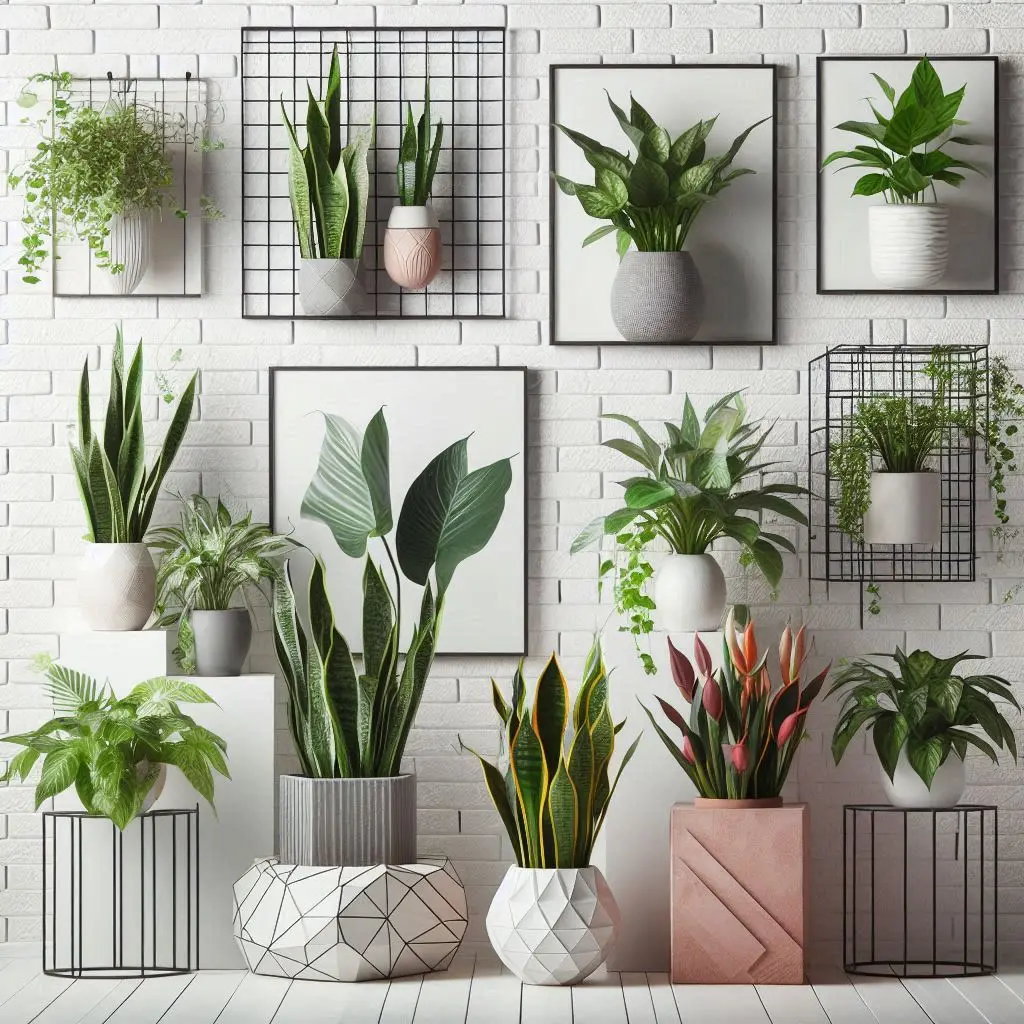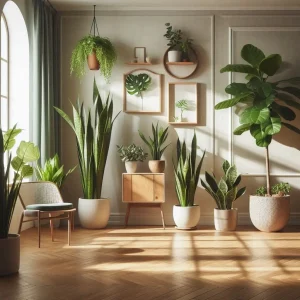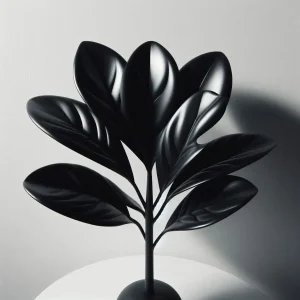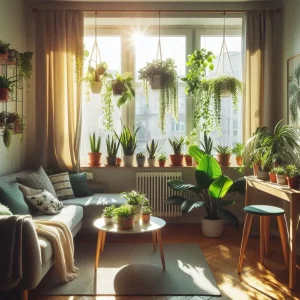Apart from adding beauty and freshness to their surroundings, flowers and plants can possess other characteristics as well. For instance, people use the leaves of the Aloe Vera plant for treating burns and skin wounds, or the blossoms of the ornamental pepper plant as a spice in cooking.
Air purifying plants are another type of these green beings, albeit(however) to some extent green! These indoor plants absorb warm and dry air during the summer season, releasing oxygen and soil moisture into the air to cool the surroundings.
Caring for air-purifying plants in bedrooms, children’s rooms, and living spaces has gained significant attention because it contributes to a restful sleep and provides enhanced energy. Therefore, purchasing plants for air purification greatly contributes to a healthy lifestyle.
Sansevieria; Mother-in-law’s Tongue
Page Contents
Toggle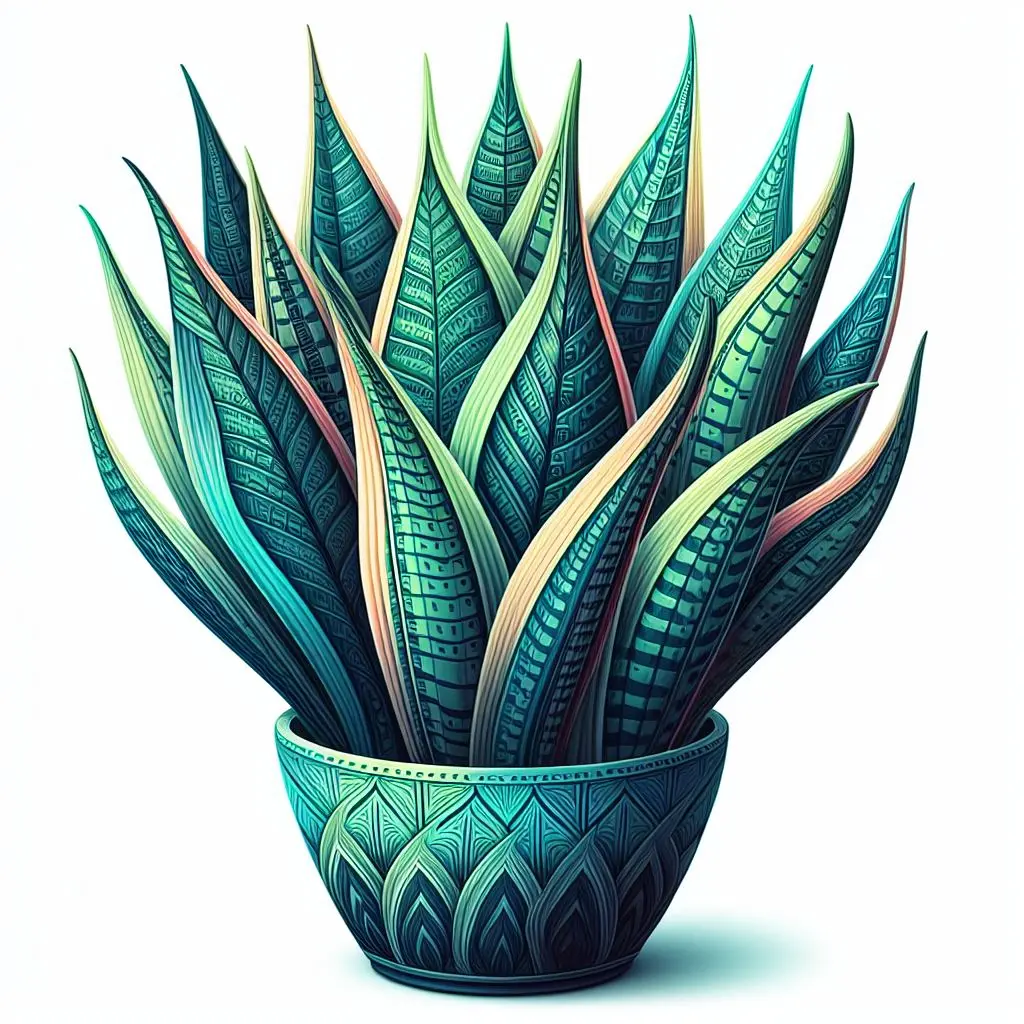
– Common Names: Mother-in-law’s Tongue, Sansevieria
– NASA recognizes Snake Plant, Sansevieria, or Mother-in-law’s Tongue as one of the most potent air-purifying plants. NASA, in its efforts for air purification and generating pure oxygen in spacecraft, has introduced a novel initiative. Through their investigations, NASA has concluded that certain plants are more effective in producing oxygen than oxygen-producing devices (ventilators)
Sansevieria is one such plant, gaining attention due to its easy maintenance and shade-tolerant nature among urban residents.
Care Recommendations:
– Maintenance: Low-maintenance
– Watering: Infrequent + water when the soil surface is dry
– Light: Low + indirect light
Don’t be concerned about humidity and soil quality; this plant will thrive in any substrate with any level of moisture, as long as it’s not excessively waterlogged.
| Feature | Value/Information |
| Scientific Name | Sansevieria |
| Common Names | Mother-in-law’s Tongue, Sansevieria |
| Spacecraft Use | Air purification and production of pure oxygen |
| Air Purification Ability | Powerful, superior to some oxygen-producing devices |
| Best Placement | Bedroom and Living Room |
| Height | Up to 3 meters |
| Care Recommendations | – Maintenance: Low effort |
| – Watering: Infrequent + water when the soil surface is dry | |
| – Light: Low + indirect light | |
| Tolerance to Humidity | Yes |
| Soil Quality | Thrives in any substrate |
Schefflera; Umbrella Plant, Air Purifier
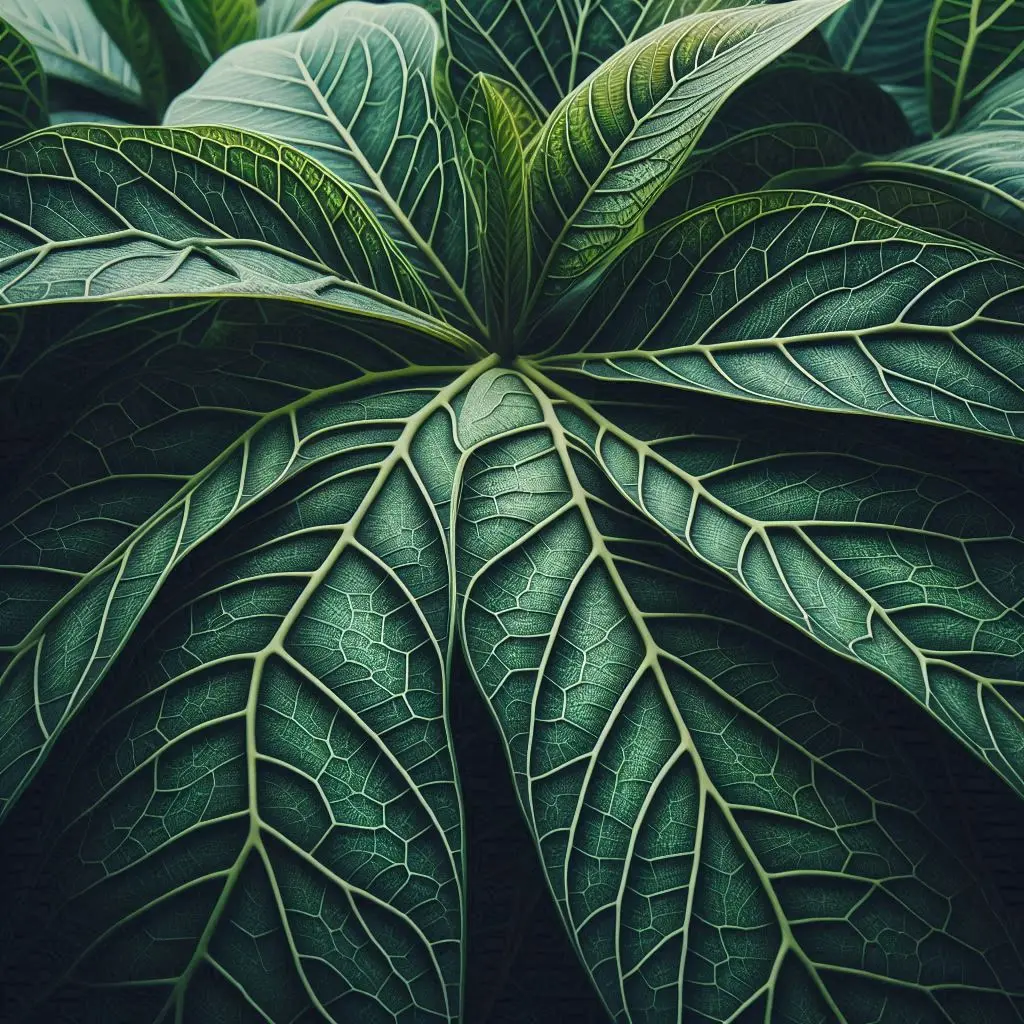
– Common Names: Schefflera, Umbrella Plant
– Schefflera, or the Umbrella Plant, is another bedroom-friendly plant. Due to the toxicity of its leaves, it is not recommended for children’s bedrooms. However, it is well-suited for propagation and maintenance in low-light apartments.
Care Recommendations:
– Maintenance: Low effort
– Watering: Low
– Light: Indirect + moderate
read more: 10 Indoor plants to help you sleep
The best place to keep Schefflera is near a south or east-facing window. Be cautious as excessive light can cause burning of the umbrella-like leaves of this plant.
| Feature | Value/Information |
| Scientific Name | Schefflera |
| Common Names | Umbrella Plant |
| Toxicity in Children’s Room | Yes (due to the toxicity of its leaves) |
| Suitability for Low-light Apartments | Very suitable |
| Care Recommendations | – Maintenance: Low effort |
| – Watering: Low | |
| – Light: Indirect + moderate | |
| Best Location | Near south or east-facing window |
| Light Sensitivity | High light can cause burning of leaves |
Cactus; Air-Purifying Cactus Flower
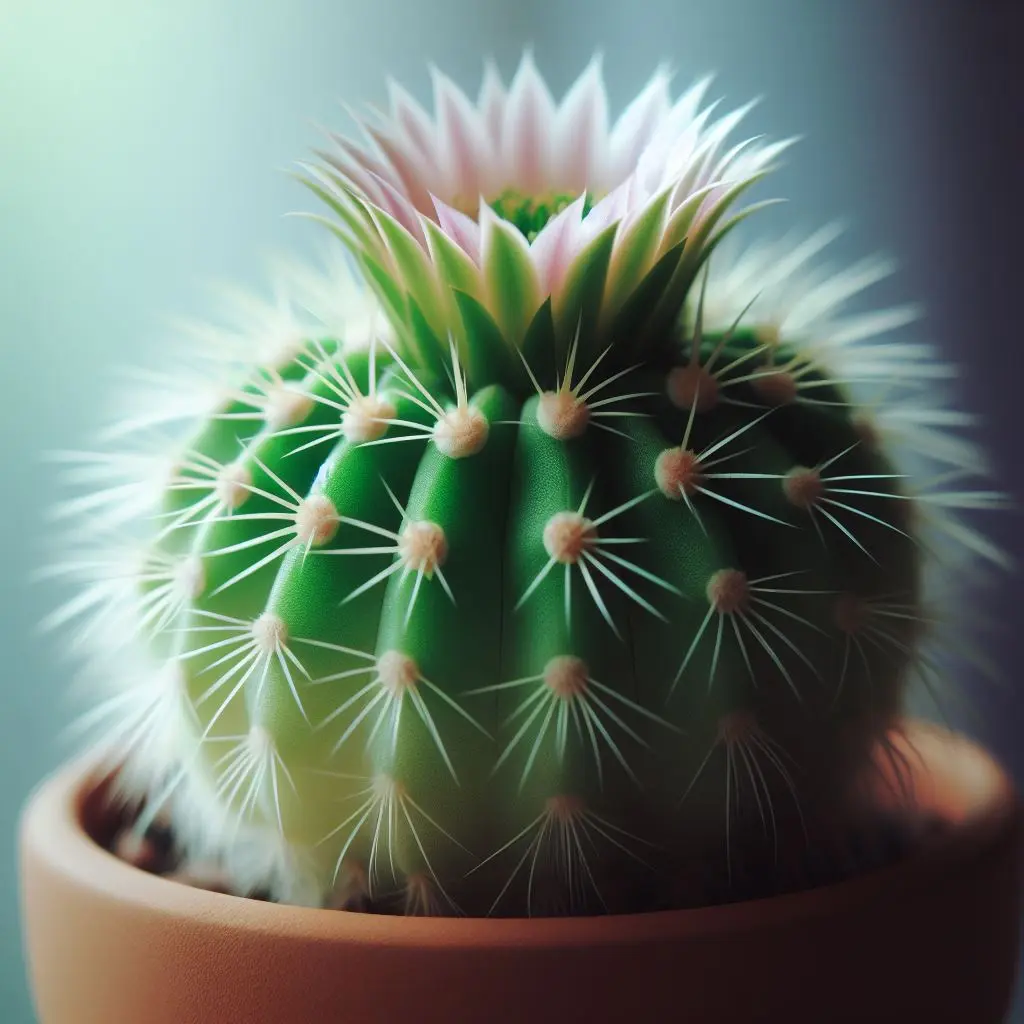
– Common Names: Cactus
– Have you ever considered keeping a cactus in your bedroom? Are you aware of the benefits of having this plant at home?
Living alongside a cactus can lead to reduced stress, increased focus, and overall well-being. The following information is derived from recent studies on maintaining cacti:
– Anxiety reduction up to 37%
– Depression reduction up to 58%
– Irritability reduction up to 44%
– Fatigue reduction up to 38%
Purchasing an indoor plant, such as the cactus, not only enhances the aesthetics of your workplace or living space but also contributes to emotional and mental well-being.
Feel free to ask if you have any further questions or need additional information.
Care Recommendations:
– **Maintenance:** Low effort
– **Watering:** Moderate + Regular watering during the growing season
– **Light:** 4 to 6 hours of filtered sunlight daily
Taking care of a cactus couldn’t be easier! Minimal watering, annual fertilization, and very low light requirements are conditions that can be met in any household. However, due to the presence of fine and coarse spines on the leaves, it is essential to keep the cactus out of reach of infants(baby) and household pets.
| Feature | Value/Information |
| Scientific Name | Cactus |
| Common Names | Cactus |
| Benefits of Keeping Cactus | – Anxiety reduction: up to 37% |
| – Depression reduction: up to 58% | |
| – Irritability reduction: up to 44% | |
| – Fatigue reduction: up to 38% | |
| Overall Well-being | Enhances emotional and mental well-being |
Ficus; The Ultimate Air Purifying Tree

– Common Names: Ficus
– If allergies and seasonal sensitivities are taking a toll on your life, consider getting a few small and large Ficus trees! Ficus is another plant ideal for the bedroom, playing a significant role in air purification and cooling.
– This plant, or rather miniature tree, is widely used in interior decoration.
Care Recommendations:
– **Maintenance:** Easy
– **Watering:** Low + Watering after the soil surface has dried +out
– **Light:** High + Indirect light
Ensure that the ambient temperature for keeping Ficus is moderate, between 15 to 27 degrees Celsius. However, keep in mind that various types of Ficus have specific care requirements.
| Feature | Value/Information |
| Scientific Name | Ficus |
| Common Names | Ficus |
| Benefits | Excellent for air purification and cooling |
| Use in Interior Decoration | Widely used |
| Care Recommendations | – Maintenance: Easy |
| – Watering: Low + Watering after the soil surface has dried | |
| – Light: High + Indirect light | |
| Temperature Range | Maintain a moderate temperature between 15 to 27 degrees Celsius |
| Special Care Requirements | Various types of Ficus have specific care needs |
Dieffenbachia; Effortless Oxygen-Generating Plant
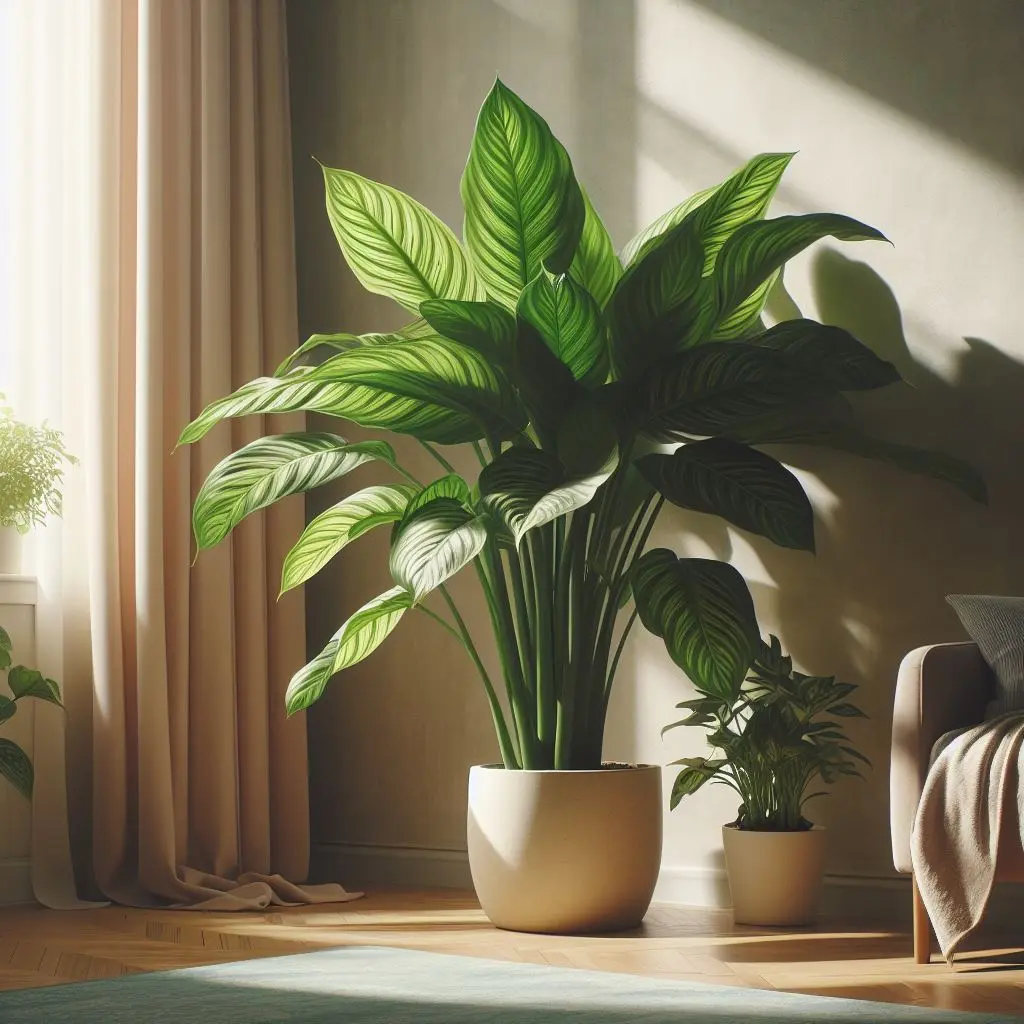
– Common Names: Dieffenbachia
– Dieffenbachia is another plant specifically suited for the bedroom, playing a significant role in cooling and air purification. With its broad and colorful leaves, this plant is an ideal companion for families without small children or pets. The leaves of this plant are highly toxic due to their absorption of harmful air pollutants.
Care Recommendations:
– **Maintenance:** Easy
– **Watering:** Moderate + Whenever the soil surface becomes dry
– **Light:** Moderate + Filtered and indirect light
Regarding the drainage of the plant bed, make every effort to ensure that water is promptly drained from the bottom of the pot.
Feel free to ask if you have any further questions or need additional information.
| Feature | Value/Information |
| Scientific Name | Dieffenbachia |
| Common Names | Dieffenbachia |
| Benefits | Excellent for cooling and air purification |
| Toxicity | Highly toxic leaves due to absorption of harmful air pollutants |
| Suitable for Families with | No small children or pets |
| Care Recommendations | – Maintenance: Easy |
| – Watering: Moderate + Whenever the soil surface becomes dry | |
| – Light: Moderate + Filtered and indirect light | |
| Drainage | Ensure prompt drainage from the bottom of the pot |
Aloe Vera; Oxygen-Generating Flower with Unique Qualities
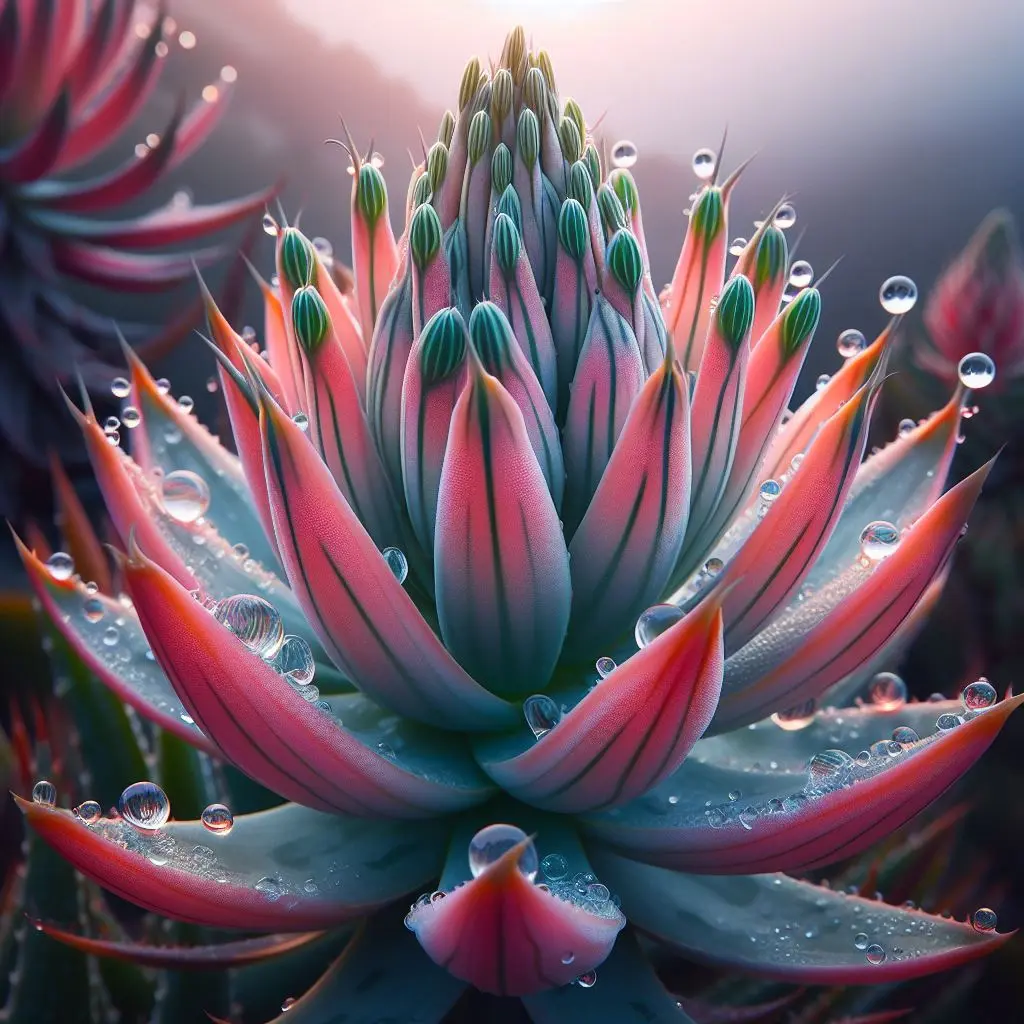
– Common Names: Aloe Vera
– The leaves of Aloe Vera, or Aloe barbadensis, contain a white gel that, when applied to wounds or burns, can alleviate itching and reduce skin redness to some extent. This attractive plant is not only aesthetically pleasing but also one of the most potent air-purifying devices!
Care Recommendations:
– **Maintenance:** Easy
– **Watering:** Moderate + Ensure the soil is dry before watering
– **Light:** High + Indirect light
The bedding material for Aloe Vera should be composed of sand to facilitate the drainage of excess water from the pot.
Feel free to ask if you have any further questions or need additional information.
| Feature | Value/Information |
| Scientific Name | Aloe Vera |
| Common Names | Aloe Vera |
| Benefits | Gel from leaves can alleviate itching and reduce skin redness when applied to wounds or burns. A powerful air purifying plant. |
| Care Recommendations | – Maintenance: Easy |
| – Watering: Moderate + Ensure the soil is dry before watering | |
| – Light: High + Indirect light | |
| Soil Composition | Should be composed of sand to facilitate drainage |
Aglaonema; Snowy Air-Purifying Plant
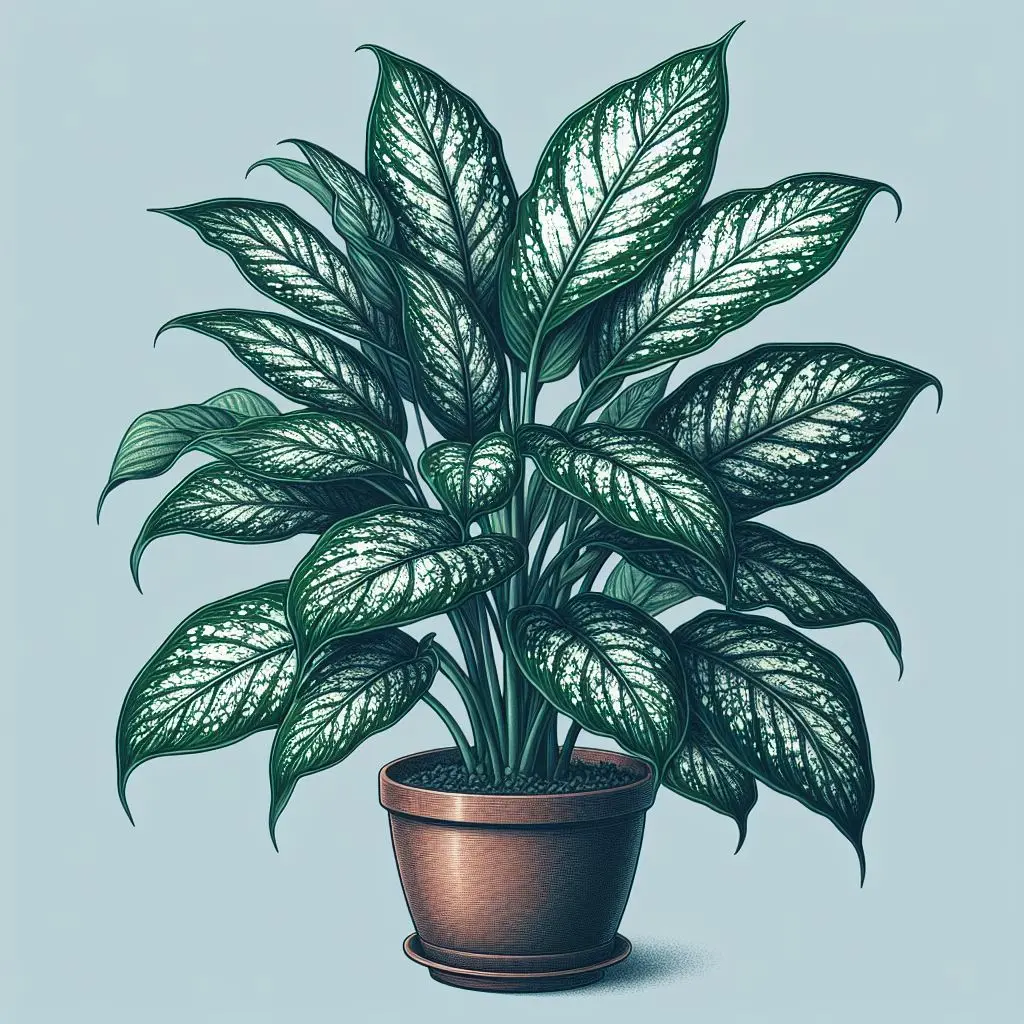
– Common Names: Chinese Evergreen, Aglaonema
– The Chinese Evergreen or Aglaonema is another suitable plant for the bedroom as it produces pure oxygen during the night, contributing to a peaceful and pleasant sleep. This plant, visually somewhat similar to Dieffenbachia, is relatively easy to care for.
Care Recommendations:
– **Maintenance:** Low effort
– **Watering:** Low
– **Light:** Low + Indirect light
Aglaonema is among NASA’s top 10 air-purifying plants, contributing significantly to air purification and improving air quality.
Feel free to ask if you have any further questions or need additional information.
| Feature | Value/Information |
| Scientific Name | Aglaonema (Chinese Evergreen) |
| Common Names | Chinese Evergreen, Aglaonema |
| Benefits | Produces pure oxygen during the night, contributing to a peaceful and pleasant sleep. One of NASA’s top 10 air-purifying plants. |
| Care Recommendations | – Maintenance: Low effort |
| – Watering: Low | |
| – Light: Low + Indirect light |
Lavender; The Miracle of Purple

– Common Names: Lavender
– Lavender, a purple miracle, has various uses. Its pleasing color makes it a popular choice for interior decoration. Due to its pleasant fragrance, people place its leaves among clothes and personal belongings. Additionally, a few drops of its extract on the pillow are considered miraculous for treating insomnia.
Care Recommendations:
– **Maintenance:** Sensitive
– **Watering:** Moderate + Ensure that the top 3 centimeters of the soil are dry before each watering
– **Light:** Receives 8 hours of sunlight daily
Lavender significantly contributes to cooling the room and improving air quality.
Feel free to ask if you have any further questions or need additional information.
| Feature | Value/Information |
| Scientific Name | Lavandula (Lavender) |
| Common Names | Lavender |
| Uses | – Popular for interior decoration due to its pleasing color |
| – Leaves used among clothes and personal belongings for their pleasant fragrance | |
| – Extract used on the pillow for treating insomnia | |
| Care Recommendations | – Maintenance: Sensitive |
| – Watering: Moderate + Ensure that the top 3 centimeters of the soil are dry before each watering | |
| – Light: Receives 8 hours of sunlight daily | |
| Benefits | – Significantly contributes to cooling the room and improving air quality |
Ficus; The Oxygen-Generating Tree

– Common Names: Ficus
– Ficus plants have vibrant green leaves, making them suitable for homes as they not only purify the air but also thrive in low light conditions.
Care Recommendations:
– **Maintenance:** Low effort
– **Watering:** Moderate + Ensure the soil surface is dry before each watering
– **Light:** Shade-tolerant + Moderate + Indirect light
Ficus is an attractive and low-maintenance plant. Its resilience allows for easy care in various environments.
Feel free to ask if you have any further questions or need additional information.
| Feature | Value/Information |
| Scientific Name | Ficus |
| Common Names | Ficus |
| Characteristics | Vibrant green leaves |
| Benefits | – Suitable for homes, purifying the air |
| – Thrives in low light conditions | |
| Care Recommendations | – Maintenance: Low effort |
| – Watering: Moderate + Ensure the soil surface is dry before each watering | |
| – Light: Shade-tolerant + Moderate + Indirect light |
Spathiphyllum; Air-Purifying Plant with Colorful Flowers

– Common Names: Spathiphyllum, Peace Lily
– Spathiphyllum is a remarkably beautiful indoor plant, and many individuals keep it at home or order it as a gift due to its aesthetic appeal.
Care Recommendations:
– **Maintenance:** Easy
– **Watering:** Moderate + Ensure the soil surface is dry before each watering
– **Light:** Low + Indirect light
Spathiphyllum initiates flowering in winter and spring, but its flowers have a short lifespan, typically lasting no more than 14 days. When caring for this plant, be cautious about direct sunlight as it can harm the plant and lead to its demise.
Feel free to ask if you have any further questions or need additional information.
| Feature | Value/Information |
| Scientific Name | Spathiphyllum (Peace Lily) |
| Common Names | Spathiphyllum, Peace Lily |
| Characteristics | Beautiful indoor plant |
| Benefits | – Popular for its aesthetic appeal |
| – Often used as a gift | |
| Care Recommendations | – Maintenance: Easy |
| – Watering: Moderate + Ensure the soil surface is dry before each watering | |
| – Light: Low + Indirect light | |
| Flowering Season | Winter and spring |
| Flower Lifespan | Typically no more than 14 days |
Pothos or Devil’s Ivy; Loving Air-Purifying Plants
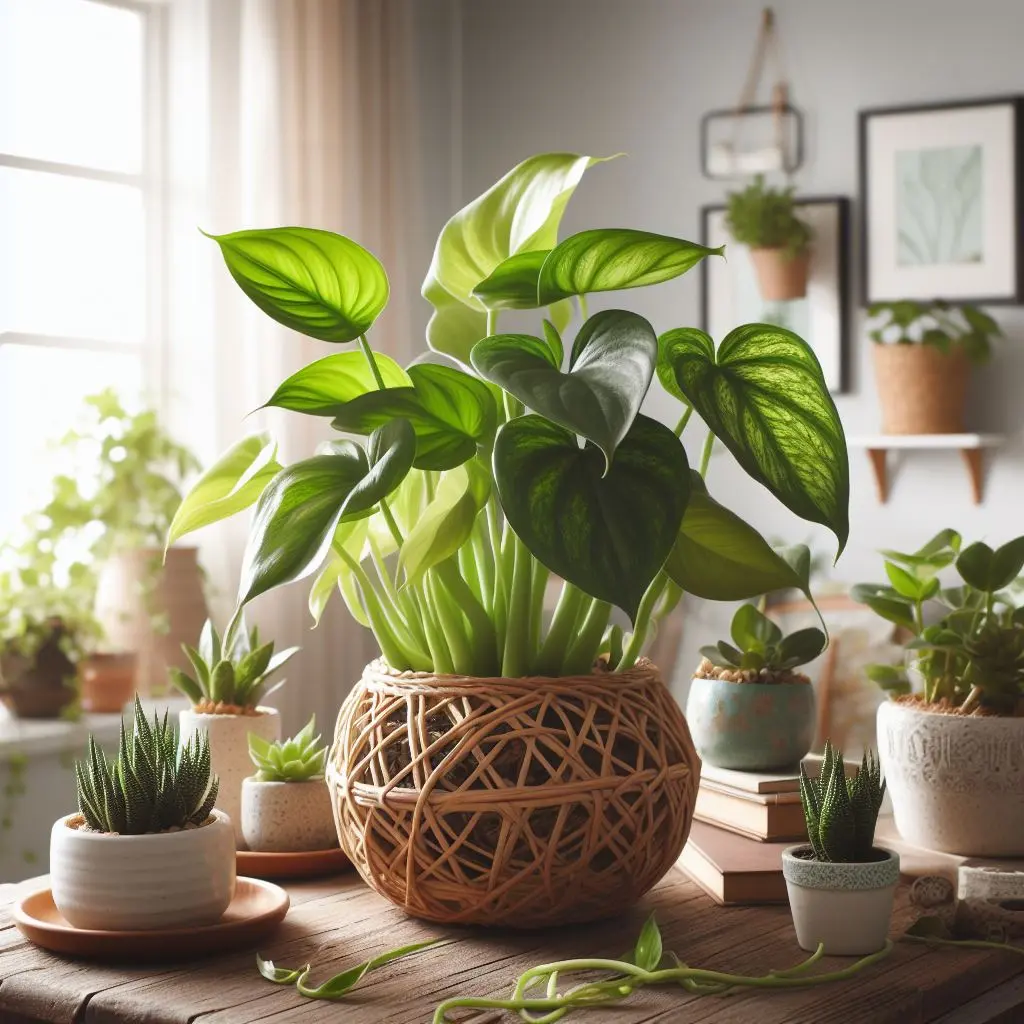
– Common Names: Pothos, Devil’s Ivy, Epipremnum aureum
– Pothos, also known as Devil’s Ivy, is considered one of the best and most important plants for air purification, even recommended by NASA as an excellent air-purifying plant. This plant can be kept both on the ground and hanging, and in general, having a cooling indoor plant is advisable for maintaining a good mood.
Care Recommendations:
– **Maintenance:** Easy
– **Watering:** The plant likes humidity, but prevent it from becoming waterlogged.
– **Light:** Low + Indirect light
To propagate this plant, you can immerse a cutting in water for a few days and then proceed to plant it.
Feel free to ask if you have any further questions or need additional information.
| Category | Recommendations |
| Common Names | Pothos, Devil’s Ivy, Epipremnum aureum |
| Maintenance | Easy |
| Watering | Likes humidity, avoid waterlogging |
| Light | Low + Indirect light |
| Propagation | Cuttings in water for a few days, then plant |
Spider Plant (Spider Plant, Airplane Plant, Ribbon Plant, Chlorophytum comosum); The Most Resilient Air-Purifying Plant
The Spider Plant, also known as the Airplane Plant or Ribbon Plant (Chlorophytum comosum), is an exceptionally resilient, adaptable, and beautiful plant. Commonly found in African and tropical regions, it stands out as one of the most beneficial plants for air purification.
Care Recommendations:
– **Maintenance:** Easy
– **Watering:** More frequent during the growing season; ensure the soil is dry before watering.
– **Light:** Low + Indirect light
Among air-purifying plants, the Spider Plant is non-toxic, making it easy to care for in homes with children or pets. If you have any more requests or need further information, feel free to ask!
| Plant Name | Spider Plant (Chlorophytum comosum) |
| Common Names | Spider Plant, Airplane Plant, Ribbon Plant |
| Attributes | Resilient, Adaptable, Beautiful |
| Origin | African and Tropical Regions |
| Air Purification | Highly Beneficial |
| Care Recommendations | Easy Maintenance, More Frequent Watering in the Growing Season (Ensure Dry Soil Before Watering), Low + Indirect Light |
| Toxicity | Non-Toxic (Safe for Homes with Children or Pets) |
Dracaena Marginata (Dragon Tree, Madagascar Dragon Tree): Sword-Shaped Oxygenator

The Dracaena Marginata, commonly known as the Dragon Tree or Madagascar Dragon Tree, stands out as a beautiful member of the air-purifying plant list. All species of the Dracaena plant can contribute to air purification, creating an environment free of pollutants.
Care Recommendations:
– **Maintenance:** Easy
– **Watering:** Low (Ensure 3 cm of soil dryness before watering)
– **Light:** Medium + Indirect
Dracaena is known for its air-purifying abilities, but it’s important to note that it is toxic. Exercise caution when placing it in areas accessible to pets or children.
| Plant Name | Dracaena Marginata (Dragon Tree, Madagascar Dragon Tree) |
| Common Names | Dragon Tree, Madagascar Dragon Tree |
| Care Level | Easy |
| Watering | Low (Ensure 3 cm of soil dryness before watering) |
| Light Conditions | Medium + Indirect |
| Toxicity | Toxic (Exercise caution, especially in areas accessible to pets or children) |
Pothos; Evergreen Oxygen-Producing Plants
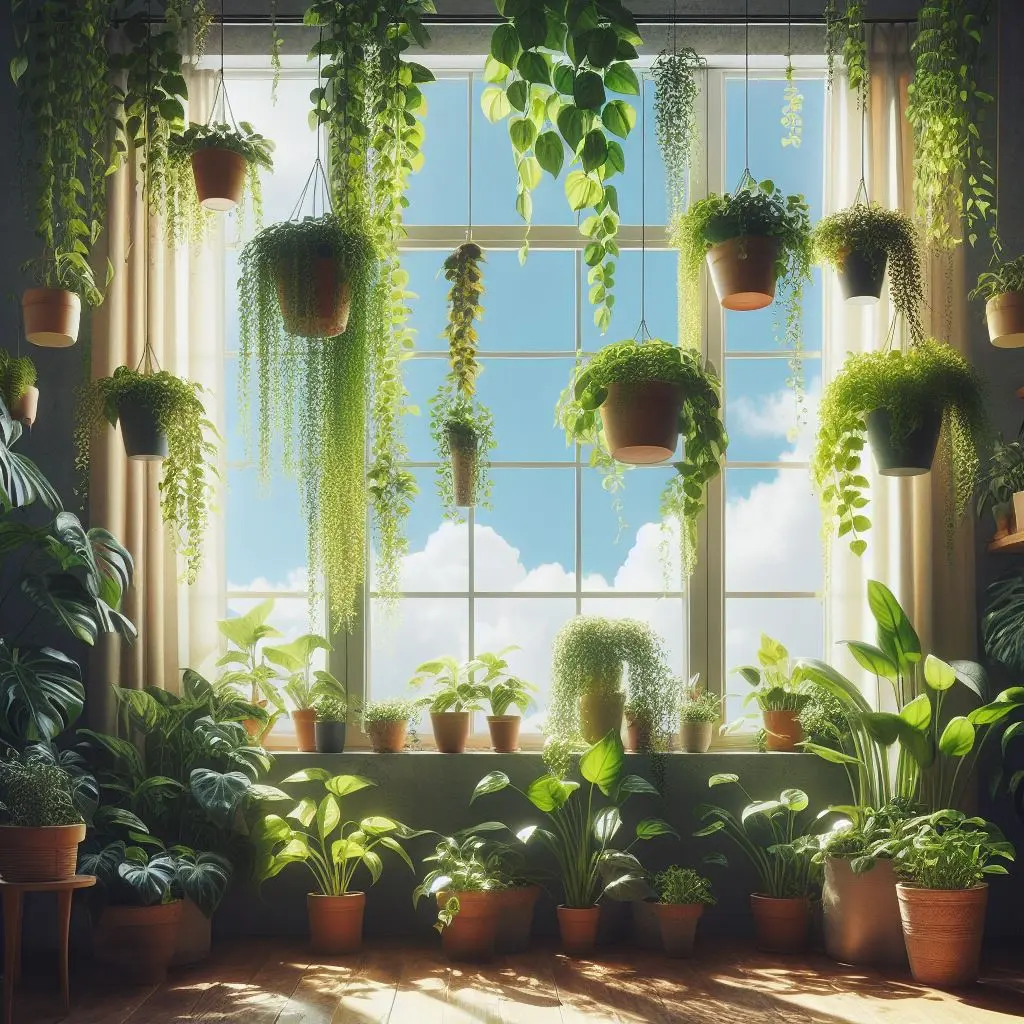
Pothos is a trailing plant with a remarkable ability to absorb air pollutants and purify it. Perhaps, it can be said that this plant is characterized by its simple care routine and beautiful appearance.
Care Recommendations:
– Maintenance: Effortless
– Watering: Moderate + Avoid waterlogging the soil.
– Light: Indirect + Medium
One of the oxygen-producing plants that is highly toxic is Pothos. Exercise caution and pay close attention when caring for this plant to ensure it is not accessible to children and pets.
| Plant | Pothos |
| Characteristics | Trailing plant with high air-purifying capabilities |
| Care Recommendations | – Maintenance: Easy<br>- Watering: Moderate + Avoid overwatering<br>- Light: Indirect + Medium |
| Considerations | Precise care is crucial in environments with children and pets to prevent potential issues. |
Types of Palms; Air-Purifying Plants

Different types of decorative palms, including Chamaedorea, Bamboo, Phoenix, Parlor, Areca, and Raphis Palms, have the ability to absorb a significant number of pollutant families causing air pollution. By drawing them in, transferring them to the soil, and converting them into nutrient sources for the roots, these palms provide you with clean air.
Ferns; Oxygen-Generating Plants for Bathrooms
Title: Ferns; Air-Purifying Plants for Bathrooms
Some varieties of ferns have also found their place in NASA’s list of air-purifying plants. This category of plants can absorb particles of pollution present in the air, providing us in return with high-quality and pure air.
Care Recommendations:
– Maintenance: Easy
– Watering: Moderate + Regular
– Light: Shade-friendly + Indirect
Ferns can manage and eliminate pollutants transferred from wallpapers and floor coverings, offering a cleaner living environment.
Title: Eucalyptus Tree; Oxygen-Generating Tree
In addition to its extraordinary culinary and industrial benefits, the Eucalyptus tree also serves as an air purifier.
The only drawback of this air-purifying tree is its inability to tolerate extreme cold, and it will perish in severe cold conditions.
Care Recommendations:
– Maintenance: Sensitive
– Watering: Moderate + Regular
– Light: Bright light
With its presence in your living environment, the Eucalyptus tree can easily eliminate toxins, providing you with clean and purified air.
Philodendron; Heart-Shaped Leaf Plant Combatting Air Pollution
If you pay attention to the leaves of the Philodendron, you’ll notice that their shape resembles a heart or wolf’s ear, earning it the names Wolf’s Ear Plant or Heart-Shaped Leaf Plant.
Care Recommendations:
– Maintenance: Easy
– Watering: Moderate
– Light: Bright + Indirect
Some air-purifying plants, like Philodendron, feature glossy and attractive leaves, making them a popular choice for many people as they add a luxurious touch to any environment.
Air-Purifying Flowers
Some flowers have the ability to purify the air, improving its quality by removing pollutants. Due to this characteristic, these flowers have found a place in the list of natural air-purifying plants. Below, you can read about some air-purifying flowers:
- **Daisy**
- **Anthurium**
- **Gerbera**
- **Azalea**
In addition to plants, air-purifying flowers are also abundant. Taking advantage of the beauty and purifying benefits of these flowers simultaneously can enhance your indoor environment.
Oxygen-Producing Trees
Trees, with their numerous leaves and intricate systems, absorb carbon dioxide and various air pollutants through the process of photosynthesis. Using sunlight, they convert these substances into oxygen and nutrients.
Below is a table outlining different types of trees that can reduce pollution and produce higher levels of oxygen.
Know and take care of spider plants (Chlorophytum comosum) quoted from the healthline website:
Also known as air plants, spider plants grow quickly and look great in hanging baskets, especially in your workspace. Sometimes they even produce lovely white blossoms.Spider plants have more than 200 species, and many of them can survive a little forgetfulness from us.Plant care: Water your spider plants 2–3 times a week.
| Tree Name | Air-Purifying Ability | High Oxygen Production |
| Chinar | + | |
| Walnut | + | |
| Mulberry | + | |
| Eucalyptus | + | |
| Pineapple | + | |
| Palm Trees | + | + |
| Bonsai | + | + |
Note: “+” indicates the respective ability, and an empty cell means the attribute is not explicitly mentioned.

